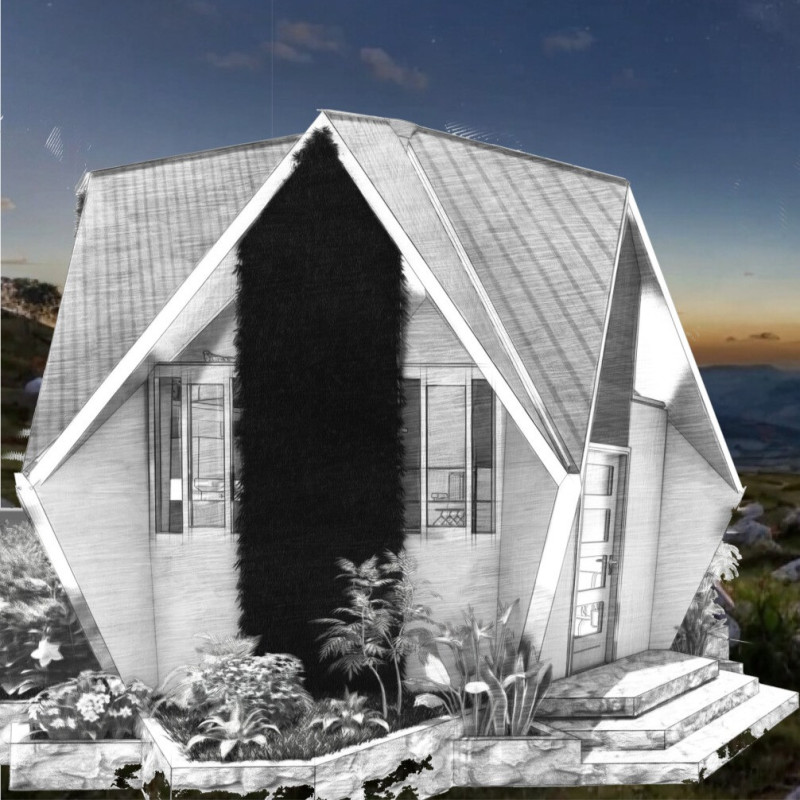5 key facts about this project
At its core, the project functions as a communal hub, designed to facilitate social interaction, creativity, and collaboration. Its layout promotes a fluid movement between spaces, allowing occupants to transition seamlessly from private to communal areas. This flexibility is achieved through an open floor plan that takes advantage of natural light, which pours in through strategically placed windows and skylights. This connection to the outdoors fosters a sense of well-being and enhances the user experience.
Each important aspect of the project has been meticulously considered. The main entrance features a welcoming facade composed of an innovative combination of materials that include glass, steel, and locally sourced wood. This entrance not only serves as a passage into the building but also functions as a visual focal point, drawing visitors in and encouraging interaction. The use of glass is particularly notable, as it allows for transparency, creating a dialogue between the interior spaces and the bustling urban life outside.
Inside, the design incorporates multifunctional zones. For instance, the main gathering area is adaptable, serving as a space for events, workshops, and social gatherings. The furniture is modular, allowing for reconfiguration according to the needs of the occasion. This practical approach to design illustrates a deep understanding of user needs and emphasizes the importance of flexibility in contemporary architecture.
The architectural design also features unique elements that distinguish it from typical building projects. An innovative structural system supports the intricate rooflines, which are not only visually appealing but also contribute to the overall energy efficiency of the building. The roof’s design aids in rainwater harvesting and integrates solar panels, aligning with sustainable building practices that are increasingly relevant in today’s architectural landscape. This decision reflects a commitment to environmental responsibility and enhances the building's functionality.
The choice of materials further amplifies the design’s intentions. Sustainable materials feature prominently throughout the project. The use of reclaimed wood and recycled metal emphasizes resource efficiency while adding character to the interior spaces. The materials engage the senses, creating a warm and inviting atmosphere that encourages users to spend time within the structure. The attention to detail is evident in the finishes and textures chosen, which are harmonious with the overall design and serve to elevate the spatial experience.
Moreover, the project's layout extends beyond its walls to include outdoor spaces that are integral to its function. Landscaped gardens and terraces provide areas for relaxation and socialization, offering users a reprieve from urban life while promoting community interaction. These outdoor areas are thoughtfully designed with native plants, reducing irrigation needs and fostering biodiversity.
In summary, the project is a well-conceived architectural endeavor that successfully marries functionality with aesthetics. It stands as a testament to contemporary architectural practices that prioritize sustainability and user experience. The combination of flexible spaces, innovative material choices, and a commitment to environmental stewardship sets this architecture apart. Readers interested in exploring further can dive into the architectural plans, sections, and designs to gain a deeper understanding of this impactful project and its innovative architectural ideas. Engaging with these elements will reveal the intricacies of the design and the thoughtful considerations behind its execution.

























